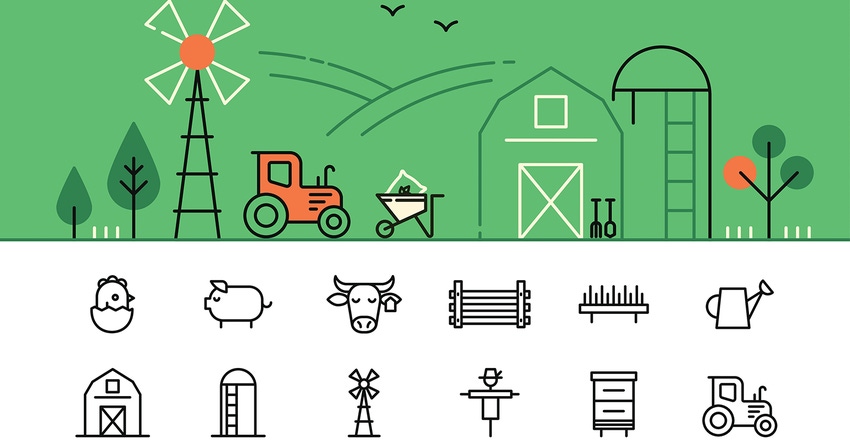Carbon farming and regenerative practices can make agriculture a leading solution in climate change mitigation. Four expert panelists discuss the practices, how companies can approach working with their supply chain and the free tools and resources to measure impact.
May 31, 2018

“I believe that we are on the cusp on the next revolution in agriculture. It is a revolution from agriculture being a net source to a net sink of greenhouse gas emissions. And it’s also a revolution from being an input intensive system to a knowledge intensive system.”
—Britt Lundgren, Stonyfield
Part 1: The next revolution
Highlights:
Katherine DiMatteo, STFA, introduces the panelists.
Britt Lundgren, Stonyfield, explains how agriculture can shift from being a climate change contributor, to being part of the solution.
The benefit of full-scale Life Cycle Analysis (LCA).
Stonyfield is supporting Farm OS, an open source, decision support platform to help farmers get the tools they need to build soil health and reduce greenhouse gas emissions.
Grounding principles to think about when starting to tackle climate change issues in your business.
-----
Part 2: Carbon farming practices
Highlights from Albert Straus, Straus Family Creamery:
Straus addresses how his company is creating a sustainability model for other organic farms to be able to use and implement.
Straus explains some of the company's carbon farming practices such as composting, hedge rows, windbreaks and electric trucks powered by waste.
How carbon farming practices can help farmers economically.
Helping more farms use carbon farming practices by creating financial incentives.
-----
Part 3: Climate impact in a larger supply chain
Highlights from Gero Leson, Dr. Bronner’s:
Leson talks about how to get suppliers to support carbon farming practices.
How Dr. Bronner’s integrated organic smallholder farmers into the supply chain before there were fair trade standards in place.
Focus on soil productivity through implementing composting, mulching, soil coverage and better farm management will significantly increase yields.
The importance of focusing on regenerative agriculture for tree and field crops.
If you want to change the behavior of smallholder farmers in the tropics, you need to speak to the economic advantages and the reduction of toxic chemical exposure.
-----
Part 4: The value of data
Highlights from Daniella Malin, Sustainable Food Lab:
Malin speaks to the value of data and how seeing the numbers is a key way to inspire and motivate others to choose a sustainable agroforestry model.
The happy correlation between sequestering carbon in the atmosphere and helping farmers financially.
The farmers know how to build good soil; they just don’t know how to get paid doing it.
Unilever, a major player in agriculture, created the Cool Farm Alliance to give suppliers free tools to implement changes and achieve significant reductions in greenhouse gases.
A quick look at the Cool Farm Tool (CFT).
-----
Part 5: Using tools to quantify impact
Highlights from Keith Paustian, Colorado State University:
Paustian discusses how agriculture has significant challenges in measuring carbon impact.
An overview of the COMET-Farm Tool and how it works to provide farm-scale greenhouse gas quantification.
COMET-Farm workflow is easy to use and specifically designed for non-experts such as farmers and ranchers.
Current applications of COMET-Farm Tool for USDA, conservation programs and private businesses to look at sustainability metrics for their agricultural products.
-----
Part 6: Motivation and connection
Highlights:
Panelists discuss what motivates farmers to participate in carbon farming practices.
Ninety-five percent of farmers transition to organic farming because of financial needs.
The premium price gets farmers interested, but they also want to be apart of community building, increasing yields and eliminating toxicity.
How companies can start evaluating their greenhouse gas emissions in order to have a positive impact.
Two important questions for companies to consider when starting out: 1. Where are my relationships with farmers the strongest, and, 2. what do I know already about where my largest impacts are?
How can the tools help companies that have no connection with their suppliers and farmers?
Why companies need to forge relationships with their suppliers if they want to have a positive impact on climate change.
-----
Part 7: Audience Q&A
Highlights:
How do younger farmers who want to use sustainable practices get access to farmland and be able to afford land?
The issue of succession and how to get young farmers interested in taking on this work and working their family’s land.
Why aren’t there more economic incentives for smallholder farmers to switch to carbon farming methods?
The failure of policy to support taking carbon out of the atmosphere. There is also a distrust in carbon sequestration and if it is a viable investment for investors.
The anonymity of carbon markets and how giving individuals and companies more knowledge and connection to the impact they are having could give additional incentive.
What are the bottlenecks for farmers to overcome financial barriers to transition to carbon farming methods?
Specific organizations and trusts that are helping inset upfront expenses for farmers.
This session—Climate Day, Digging into Carbon Farming—was recorded at Natural Products Expo West 2018.
About the Author(s)
You May Also Like


